#world war 2 battle arnhem
Text
The Devil's Birthday: The Bridges to Arnhem, 1944 :: Geoffrey Powell
The Devil’s Birthday: The Bridges to Arnhem, 1944 :: Geoffrey Powell

View On WordPress
#0-9076-7525-5#101st division#82nd division#battle arnhem#books by geoffrey powell#british airborne soldiers#british army#british military history#first edition books#general sir john hackett#horsa gliders#market garden#military history#netherlands campaigns#usaaf intelligence#waco gliders#world war 1939 1945#world war 2#world war 2 battle arnhem#world war ii#world war two
0 notes
Text
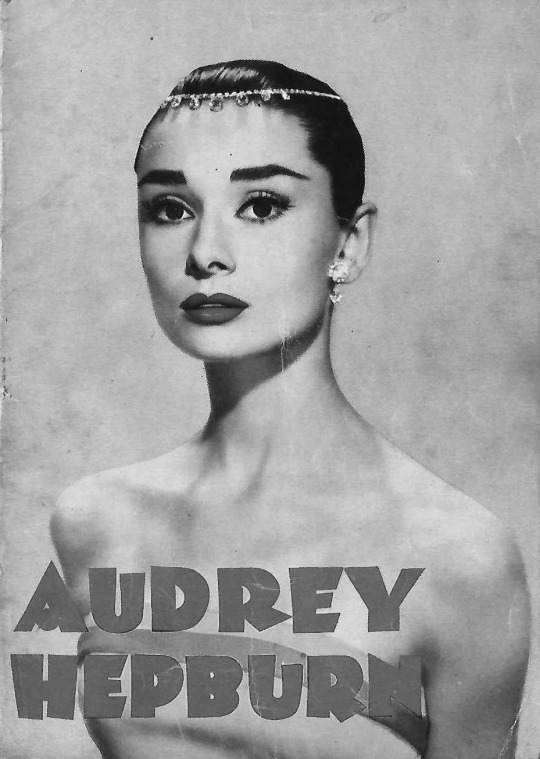
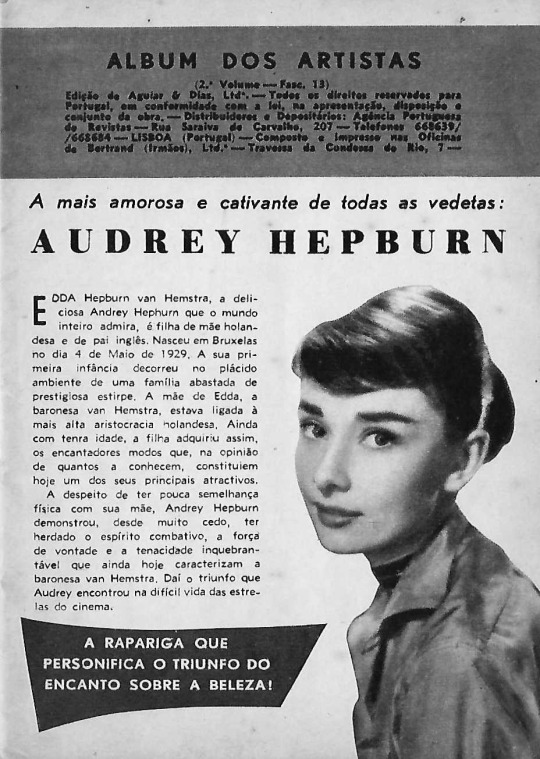
Audrey Hepburn's life story featured in the Portuguese publication Album dos Artistas issue number 13 of the 2nd Volume, published in 1957.
Part 1 • Part 2 • Part 3 • Part 4 • Part 5 • Part 6 • Part 7 • Part 8 • Part 9 • Part 10
ROUGHLY TRANSLATED STORY
(Originally published in Portuguese)
THE MOST LOVING AND CAPTIVATING OF ALL THE STARS: AUDREY HEPBURN
Edda Hepburn van Heemstra, the delightful Audrey Hephurn whom the whole world admires, is the daughter of a Dutch mother and an English father. Born in Brussels on the 4th of May 1929. Her early childhood was spent in the placid environment of a wealthy family of prestigious ancestry.
Edda's mother, Baroness van Hemstra, was linked to the highest Dutch aristocracy. Even at a young age, the daughter acquired the charming manners that, in the opinion of those who know her, constitute one of her main assets today.
Despite bearing little physical resemblance to her mother, Audrey Hepburn demonstrated, from an early age, that she inherited the fighting spirit, the strength of will, and the unbreakable tenacity that still characterized Baroness van Heemstra, hence the triumph that Audrey found in the difficult life for movie stars.
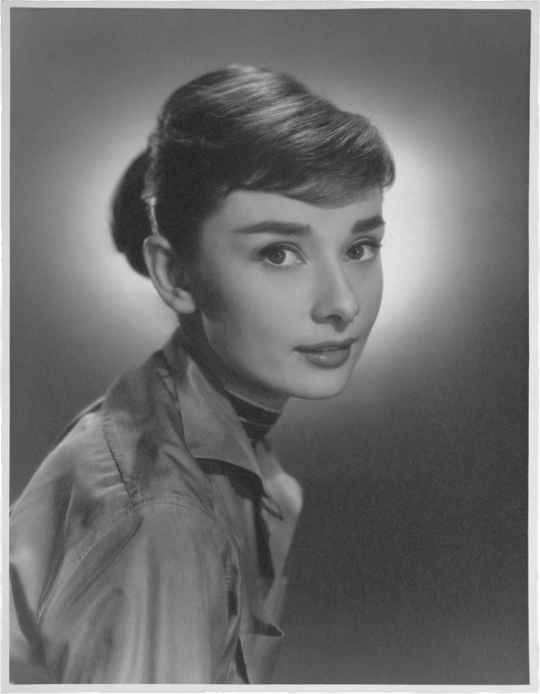
Audrey Hepburn in a publicity photograph for Funny Face (1957)
Photography by Bud Fraker
THE GIRL WHO PERSONIFIES THE TRIUMPH OF CHARM OVER BEAUTY!

The second world war surprised little Audrey, who was then barely twelve years old in the locality of Arnhem, the Netherlands. She had gone to visit her aunt and uncle.
One night, she was playing with her cousins by the radio receiver, when the announcer's voice, too serious, caught her attention. Hearing the news of Germany's declaration of war on France, she quickly ran to her mother.
"Mama, the radio announced that the war has broken out and that an invasion of the country by the Germans is feared."
"This time the thing is serious, my daughter."
"Shall we go back to our house, mama?"
"I don't know. I'll consult your uncles. Perhaps it is better that we wait for the events in our country."
"Mama!" begged the girl. "Is it true that no one will escape the war?"
"Who told you such a thing, daughter? Don't think about it. God will watch over us."
Holland was soon invaded by the Germans. Audrey and her mother had no choice but to remain there for the duration of the war.
The apocalyptic visions of war were forever etched in the memory of little Audrey: endless lines of armed men parading through the peaceful streets of the small town, Dutch army carried out by ambulance, tractors dragging huge anti-aircraft and anti-tank guns, armored trucks, and a never-ending machine of death and destruction.

Audrey Hepburn in War and Peace (1956)
When the second world war broke out, Audrey was only 12 years old, and the invasion that killed Holland impressed her deeply. with sensitivity.
From time to time, she sees lighted cars where she saw the officers of the General Staff. When Audrey sees them, she knew there was an offensive coming or that any strategic post was threatened, with a lack of men and material. She also knew that enemy bombs would fall on the meadows and the white Dutch roads. After the battle, the endless processions of vehicles of all kinds began again, crossing the country from foot to foot and getting lost in the infinite desolation of the dusty roads.
In the villages, there were cruel vestiges of the battles at the front. Destroyed houses, horrible crevasses that threatened to collapse entire buildings, twisted beams, ruin and desolation everywhere. And one day, at little Edda's house, an order came from the invading command.
"What happened, mama?" asked Audrey upon seeing her mother's saddened face.
"It's your brother's mobilization order"
"But he's too nervous to be a soldier..."
"They mobilized him for agricultural work. Let's hope nothing bad happens to him..."
Rebellious tears streamed down the little Edda's eyes. The baroness contained hers and hugged her with all her strength.
After the recruitment of Audrey's brother, only the mother and daughter remained in the punished city. The family of Baroness van Heemstra had been completely ruined and could not help the two women who, alone and without resources, had to do miraculous acts to survive.
It was then that Audrey's mother showed the full force of the integrity of her character. With her skill and her practical sense of life, she was able to face the terrible boredom that separation from loved ones represented for her, having only the company of a child who needed to be cared for and to be fed, despite not receiving any help from outside.
Audrey remembers today with a painful smile those hard times of war. And she says: "Since that time, I have not believed in the dangers of an excessive diet."
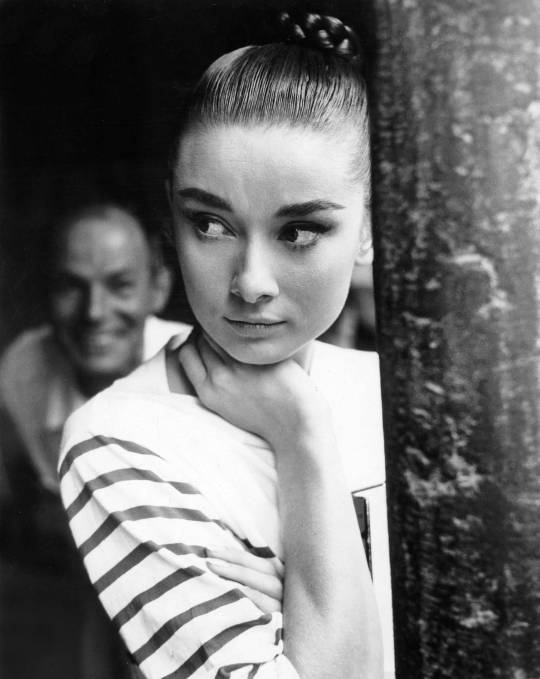
Audrey Hepburn photographed during the production of War and Peace in 1955
Little Audrey's memory is forever etched with apocalyptic visions of war.
Source: NSANTO: Portuguese Magazines
3 notes
·
View notes
Text
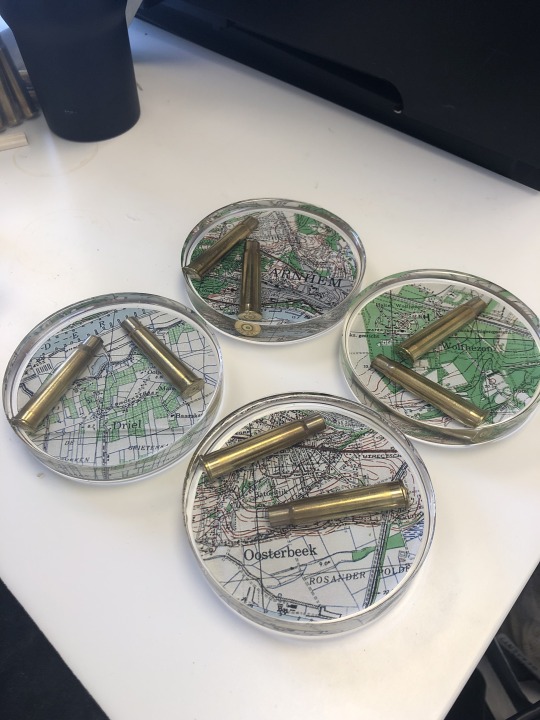
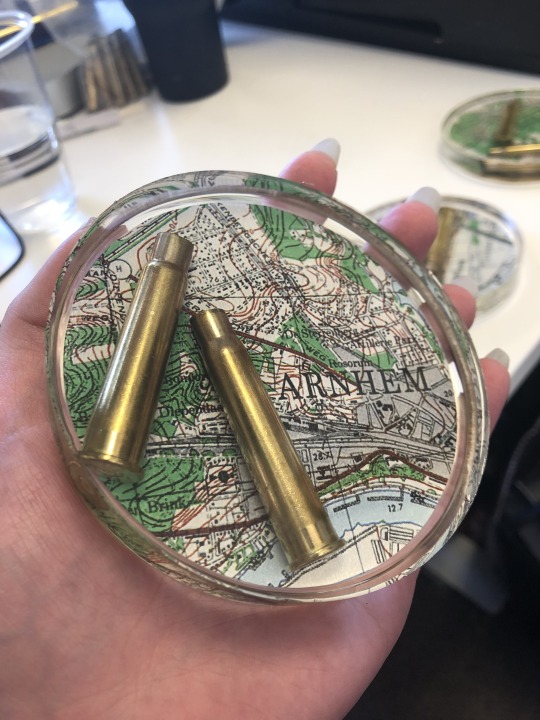

I’m pretty happy with these Operation Market Garden coasters I made.
Thanks for placing this custom order! @ivan-fyodorovich
#operarion market garden#battle of arnhem#arnhem#ww2#world war ii#world war 2#resin#resin art#home decor#home inspiration#netherlands#eindhoven#airborne#british army#british 1st airborne division#oosterbeek
1K notes
·
View notes
Photo

Fans of the Dutch football club Vitesse pay tribute to the British PARAs that fought in the battle of Arnhem 74 years ago.
#battle of arnhem#operation market garden#history#military history#ww2#world war 2#world war two#second world war#remembrance#poppy
76 notes
·
View notes
Text
Whatever Happened to 20mm World War II Miniatures?
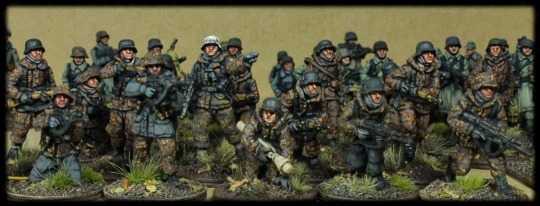
Yeah, I can’t say it’s been a question on everyone’s mind, but it has been on my mind and the minds of many like-minded aficionados. Many have proclaimed that 20mm is a dead scale for World War II. I can honestly say it’s the furthest thing from the truth. There are quite a few established manufacturers, as well as some new quality manufacturers out there. I would even argue that the scale is on a cusp of a renaissance., both in plastic and metal. This is going to be the first article in a series about 20mm and World War II, starting with a look at what I consider some of the best lead 20mm World War II manufacturers out there and where I’d go to get started in the scale.
Part 2 will be about the plastic side of the hobby, and Part 3 will be a discussion of various rules sets.
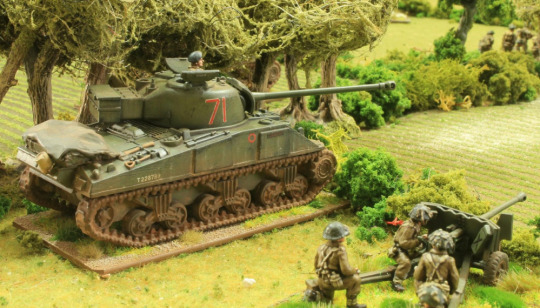
Why 20mm?
20mm has had many advantages traditionally for miniatures gaming. The availability of soft and hard plastic figures has always been good, and for a box of $10, you can put together the beginnings of an army in many rules sets. When I was a kid, I used to call it “platoon in a box.” Most lead manufacturers back in the 70s and 80s used to have their 20mm lines supplement these plastic figure lines. But that’s not the case anymore. Now, there are many fine lead 20mm lines that stand on their own that we’ll be discussing here today. This list isn’t exhaustive, but it’s meant to show that 20mm as a scale for World War II is far from dead.

So, what is 20mm?
20mm, as wargamers call it, is a nebulous scale. We’re using it to refer to the height of a miniature, from the sole of a figure’s foot to the level of his eyes. To be honest, most “20mm” figures range on a scale between 18mm and 23mm. Let’s be honest, most scales have that sort of range, and sometimes, some manufacturers don’t play well with other manufacturers. It’s just a question of getting to know what you’re looking for.
As for vehicles, the scale corresponds with 1/72 to 1/76 scale, with many gamers preferring 1/76, but I personally like 1/72. I just like the larger vehicles, and it’s easier to find vehicle kits in 1/72 these days. That not to say you can’t mix the scales on the table-top, but I wouldn’t do it too often. The differences in scales can be a bit jarring, to say the least.
Here’s a comparison side-by-side of some of the more popular figure lines out there:
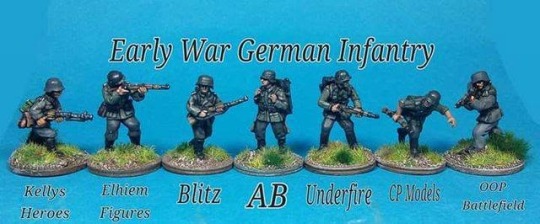
A Whistle-Stop Tour Through the Land of 20mm!

A.B. Miniatures – Their offerings in 20mm are basically the gold standard of 20mm World War II right now. The sculpts are excellent! (I can personally attest to their British as those figures are excellent in their quality and proportions). The packs are well-designed, and one pack usually gets you what you need for a given squad or heavy weapons crew. The packs are designed to mostly cover the mid-to-late war period, with Americans, Brits, Germans, Soviets, with some extra tank crews for the Italians and the French and some Polish paras for Arnhem. I will say the German Fallschirmjager works well for the Low Countries, Norway, and Crete, so long as you remember which kit you’re buying (no Stg-44s or Pak-40s). Their website is easy to navigate, and for American customers, you can purchase them through Eureka USA. One plea from this American customer, can you please do late war Americans in M43 uniforms?

Wargames Foundry – This is a reissue of a miniatures line from the 1980s. There are things to like about the line, and there are things I don’t like about the line. I have some of the figures from some secondhand purchases at conventions, but not a full set of anything. The sculpting quality, like all Foundry products, is excellent but not quite as good as AB in 20mm. I don’t like that in many sets, you mostly get the same poses. I wish there were more dynamism in the sets. That said, you have German DAK, Fallschirmjager, Panzergrenadiers, winter dress, late war Germans with the anklet boots, tank crews, as well as early war Germans. You also have Italians in European and African uniforms and Askari colonial troops. You also have Nationalist Chinese (one of the few 20mm manufacturers to have them), as well as 1939 Poles, 1940 French, including Colonial infantry, and Foreign Legionnaires for Bir Hakim and Resistance types to fight the Boche at home! There are also Australians, Finns, Indians in turbans (all suitable for North Africa) as well as the SAS and Americans in summer and winter dress. It’s a fairly complete range, but the poses are an issue for me. Prices are a bit high with shipping on this side of the pond, and I am not familiar with any American distributor of the line currently.

Britannia Miniatures – Currently being sold by Grubby Tanks, I own a lot of these. The depth and breadth of the line is extensive! Want SS Cavalry on Horseback? They have them. Want late war Japanese? They have them. There’s very little they don’t have. Much of my Soviet army are Britannia and I rather like them and their manner of sculpting makes them easy to paint. Some aren’t nuts about it, as the figures tend to be on the larger side than other 20mm, but I find they mix well with most lines if you’re careful. Again, I am not aware of any current U.S. distributors for the range, but the prices are reasonable, but postage these days is going to take a bite.
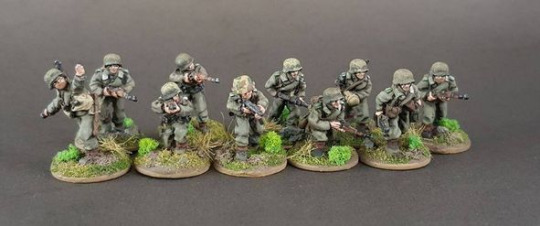
Simon’s Soldiers – Simon Ford has been in the miniatures industry for a long time. He has retained the services of Andrew Stevens who has sculpted for Drews Militia, Battlefield, Wartime, and now Simon’s Soldiers. I’ve always liked Andrew’s sculpting style, especially for the Germans (of which I have legions of). All of the figures are full of character and give you that “I’m a tired guy on the frontline” look and I can recommend his Volkssturm line and the Panzer Lehr. The late war Americans are also particularly good figures. There’s really nothing bad I can say about them. My only regret is there’s no U.S. distributor, as while the Australian Dollar is lower than the U.S. Dollar, you’re gonna get nuked on postage these days. But, if you make a big order, you can probably order enough to make the postage not hurt as much! And you have to love Simon’s customer service. Who can’t like a guy who reminds you on Facebook you haven’t purchased any figures lately? Pay Simon a visit, and tell them Jason sent you. Simon and I are friends, and I can honestly recommend his product. Andrew also works for Playa Manor, a new Spanish company focusing on Battle of the Bulge, and the figures are gorgeous!

Ehliem Miniatures - I really like their sculpts, and Matt Hingley (See our previous interview here) does a fine job of customer service and providing miniatures nobody else does in 20mm for World War II. I mean, he has early, mid, and late-war Waffen-SS (FAA does Early War S.S., but their sculpts are a bit…eh compared to Ehliem). One of my favorites—and I might be a bit biased as I commissioned them—were the Soviet Navy sailors he produced. They’re the only ones with helmets in 20mm. Everyone else does them in the full uniforms, rather than the mixed uniforms of Army and Navy gear they wore as the war ground on. Again, postage is a bear from the U.K., but Matt will work with you! Again, tell him Jason sent you.
This article barely scratches the surface of what’s out there, as you have Xan and Adler, whom I haven’t tried, but hear good things about, and the multitude of fast build plastic kits out there, which we’ll discuss in a subsequent article. But 20mm World War II is a plethora of options. If you want to wargame World War II in 20mm, a grand adventure awaits. One more piece of advice. I’d pay the Frontline Wargaming – WW2 Facebook group a visit. The group is a great place for the novice 20mm gamer to visit, and you’ll get tons of help and advice there.
--
At Epoch Xperience, we specialize in creating compelling narratives and provide research to give your game the kind of details that engage your players and create a resonant world they want to spend time in. If you are interested in learning more about our gaming research services, you can browse Epoch Xperience’s service on our parent site, SJR Research.
--
(This article is credited to Jason Weiser. Jason is a long-time wargamer with published works in the Journal of the Society of Twentieth Century Wargamers; Miniature Wargames Magazine; and Wargames, Strategy, and Soldier.)
4 notes
·
View notes
Text
The Bridge At Arnhem
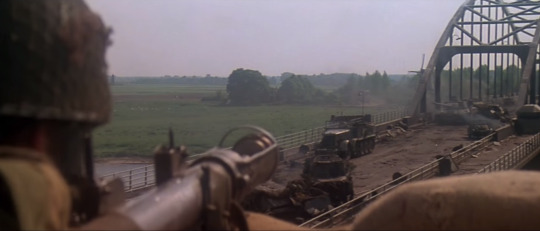
This year is the 75th anniversary of Operation Market Garden and the Battle of Arnhem. Arnhem’s bridge is most famous for being 'The Bridge Too Far', which was at the centre of Cornelius Ryan's book and the subsequent classic war film of the same name. Lets take a look at the history of the famous bridge.

The earliest bridge across the Nederrijn (Lower Rhine) through Arnhen was a pontoon bridge which had been in place since the 1600s. Various pontoon bridges occupied this location, just west of the Arnhem road bridge, through to World War Two.

The bridge which was so prominently fought over in September 1944, was the 'Rijnbrug', construction of which began in 1932 and was completed in 1935. During the German invasion in May 1940, Dutch army engineers blew the bridge to slow the German advance. The Germans rebuilt the bridge during their occupation of the Netherlands, work only just being completed in the summer of 1944.
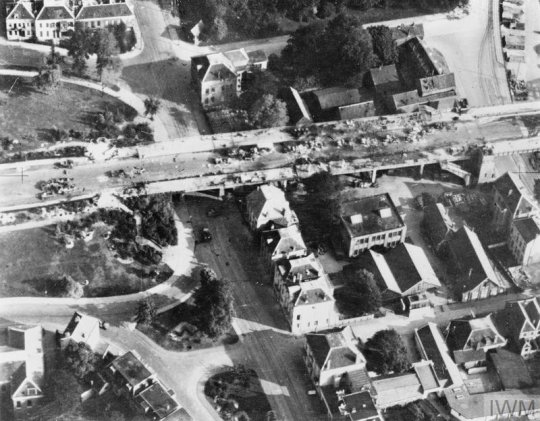
Arnhem’s road bridge was the last of a series of bridgeheads which needed to be captured in order for Operation Market Garden to be a success. British airborne troops failed to capture the bridge completely, but did secure the northern end. While fighting around the bridge was heavy the structure itself survived the battle, although its northern ramp was littered with the remnants of a destroyed SS Recce Battalion vehicles (see above).
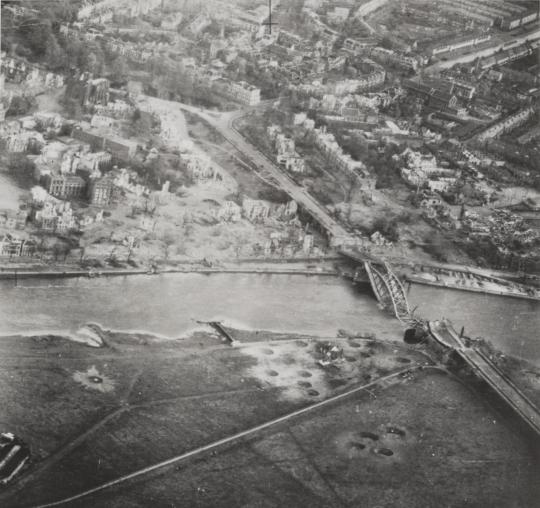
After the battle the bridge only survived a matter of days when, on 7th October, B-26 Marauders of the USAAF's 344th Bomb Group bomved the bridge, destroying its central span, in order to prevent German reinforcements crossing the river.
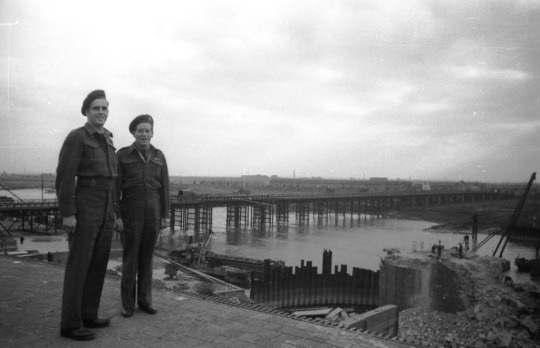
With the bridge destroyed when the Allies finally liberated Arnhem in April 1945, a new temporary Bailey Bridge was built next to the remains of the destroyed Rijnbrug.

The temporary Bailey Bridge was replaced when the newly rebuilt Rijnbrug reopened in 1948. With a similar arch but subtle differences from the original bridge. In 1977 the bridge was renamed in honour of Major General John Frost who had commanded the British troops who fought in Arnhem.
Sources:
Image Sources: 1 2 3
If you enjoy the content please consider supporting Historical Firearms through Patreon!
#History#Military History#Operation Market Garden#Battle of Arnhem#A Bridge Too Far#Arnhem#WW2#WWII#World War Two#Second World War#John Frost#John Frost Bridge#Rijnbrug#Bailey Bridge#Market Garden 75#Arnhem 75#75th Anniversary of Market Garden
263 notes
·
View notes
Text
Forgotten and Overlooked Cartoon Movies
On this week’s discussion we will explore two cartoon movies that you either may have watched when you were a child and got you disturbed giving you nightmares or you watched as an adult but probably had the same reaction as if you were a little kid. Or maybe it was just me who felt very confused watching it. This brings to my mind a thought. Are cartoons/ animation movies strictly designed for a young audience? Can a cartoon that is designed for children bring themes that may bring valuable discussions at home and teach good lessons to a little mind in development? Finding Nemo suggests to kids that step out of your comfort zone is important and to never give up even having so many obstacles on your life journey. Mulan is a great representation and inspiration for little girls to know that they can and should fight for their rights with confidence and independence. The list of animation movies that can be very inspiring for children is extensive. Although not all the cartoons/ animations movies have a young audience target. Titles such as “Fritz the Cat” (1972), “South Park” (1999) and the outstanding autobiographical “Persepolis” (2007) are definitely movies that probably wouldn’t be a good idea to have your child sitting next to you in the living room while you watch it.
Some movies sometimes either get forgotten or overlooked in the history of cartoon movies. Today we will give the attention necessary and deserved to two adult cartoon masterpieces; “Fantastic Planet” (1973) directed by Rene Laloux and “Watership Down” (1978) directed by Martin Rosen. Both movies are incredible on bringing to the table topics such as violence and power, authoritarian leaderships, division of social classes, democracy, the seek of home and belonging. We will cover that in a moment but excuse me on giving you some spoilers first. Both movies are modeled and gives to the audience historical lessons about specific times, events, and political aspects in society.

“Fantastic Planet” (1973) was a landmark in the history of European animation directed by Rene Laloux. The movie is a completely though-through science fiction vision which may be for many breathtaking or an unnecessarily experimental miserable detour. The movie resonates with historical allegories and radical politics based on European aesthetic principles. I personally find the aesthetic of this movie very surrealistic and resembles Salvador Dali’s artworks. The film takes place on the planet Ygam and shows two tribles of organisms that live against each other. The gigantic, intellectual, and blue Draags and the small and pinkish Oms that were removed by their masters Draags from their planet. The Oms are domesticated and enslaved by the Draags. The story unfolds and is narrated by Terr, one of the members of the Oms who grows and matures being domesticated next to the Draags. Terr learns about the culture of the Draags and their strange rituals of learning, meditation, wisdom, and development. Through mental inducement devices to transmit knowledge to future generations the Draags open the collective wisdom of their race. Terr escapes his captors and joins a renegade group of Oms. As the Draags try to control the radical Oms the film concludes in the final confrontation between the two groups and a satellite known as the Fantastic Planet.

In 1968 the film faced obstacles in the middle of its production. Soviet tanks invaded Prague, where the film was being produced, and occupied the city. After the invasion, the production of the film was extended for four years and was only released in 1973. In many ways the film represents these events. The communist occupation not only in Czechoslovakia but also in other Eastern European countries, is directly reminiscent of the convenient enslavement of the Oms by the Draags. In addition, the analogy of the relationship between owner and animal is effective between representing the relationship between the Soviet Union and its satellite states. While animals and Oms experienced modest degrees of autonomy, this was always monitored and limited by their masters. In both cases these masters maintained the fate of their servants. During that time, the illusion of this need was fabricated and often promoted to praise the positive attributes in the master. Besides that, the illusion of freedom has always been available at a distance, but it was collected in small doses. The masters reinforced and affirmed the hierarchical relationship that subordinates had with their servants. Two other elements are also symbolic of social and historical phenomena. Firstly,the tactics and techniques used by the Draags to destabilize the Oms and the camps where they lived that resemble the Nazi concentration camps and gas cameras. The film does an excellent job portraying the terror that the Draags cause in the Oms. The threat is greater than the attacks themselves. Didactically shows how to psychologically demoralize a society. Fear and oppression can have much greater causes and penetrate the coincidence of their victims. The film is then a provocative incursion into the state-sponsored psychological terror and its behaviors.

The second movie in discussion is “Watership Down” (1978) by Martin Rosen. The movie is a British animation based on the novel “Watership Down” by Richard Adams. The film was successful in the UK but not so much in the US. The controversy around it is what brings more attention. At first the audience may think it is a movie about cute bunnies living on a field. Well, its not extremely wrong but it goes far beyond it and its sensitive and explicit content is what labels the movie as an adult animation. The plot focuses on a group of rabbit living in the countryside. The group learns that their land is being invaded and poisoned by a construction company. They try to persuade the chief to evacuate. The chief refuses and they make a breakthrough with other members of their community. Many altercations happen between the group and makes the plot more excited and intriguing. The violence and the rage of the rabbits are shocking for many viewers. This film was U rated, which means it is suitable for all ages. And that’s what makes it more controversy. It creeps adults out and I can only imagine all the nightmares kids would have after watching it. The story is simply enough to follow with some tips of comedy in between the dramatic violent and swearing scenes.

What most of the viewers may not know is that “Watership Down” was inspired by its novel author Richard Adams real life personal experiences. He revealed that many of the animals in the movie were designed and based on officers that he, as a lieutenant, commanded in the World War 2. Not just the characters but many of the stories lived by the bunnies were also based on his real-life experiences and specifically the Battle of Arnhem, which he fought for over nine days in September 1944. Many soldiers were killed, and it answers why we see so many deaths and violent scenes in the movie. The character Hazel was inspired in his commanding officer Gifford. Gifford survived the war, and so did Hazel. According to the author, Bigwig was based on Captain Desmond “Paddy” Kavanagh. Adams describes him as “afraid of nothing and sensationalist”. “Good stories ought to be exciting and if they are exciting, they are inevitably scary in parts”- Richard Adams.

Learning more about the two films and its context, I believe it is easier now to understand and visualize the shared topics prior mentioned. Both movies are a tremendous critic to abuse of power and the use of mental and physical violence by the leaders in both fictional and real society. Our contemporary society lived and still experiences all these aspects. The movies simple used real-life events to base their narrative on. The division between social classes is clearly visible specially on “Fantastic Planet”. In todays age we still see and fight against this variance. Socio-economics class division happens in every and each country around the globe and it can be even more endured when we add race and sexual orientation for example. The seek of home and belonging are also very well covered in both movies. All the groups in both films wanted a place to be free from oppression and without fearing for their lives. I believe that everyone around this planet first goal in life is to feel secure, free and have a place that they can finally have this feeling of belonging inside their hearts.
Movements such as the Black Lives Matter are a great example of an oppressed community who is (and has always been) standing up for themselves, making them and their stories heard and fighting against an oppressive system in order to gain equality, safety and freedom.
https://blacklivesmatter.com/

In reference to the movie “Watership Down” I would like to also use the MST (Landless Workers Movement) as an example of fighting for the right of obtaining living and a sense of belonging. The Brazilian social movement defines it’s as goals access to land for the poor workers through land reforms.
To learn more about the movement please visit their page.
https://mst.org.br/english/

We already know that in “Fantastic Planet” the system the Draags kept the Oms in is oppressive and limit their capability of learning. They were labeled as savage and domesticated Oms. This system pretty much reflects the society we live in. The system intentionally takes out the chances of the less fortunate on learning and growing as people. It creates a division either in the movie and in our society between the “intellectuals” and the “anti-intellectuals”. What happens is that most oppressed group does not even have the eager of gaining more knowledge and that is all a consequence of the system they live in. It is all meticulously orchestrated by the system and it only makes the so called “intellectual” group of society more powerful over the other groups.
To be able to overcome their reality, the Oms had to finally come together and unite against the Draags. They had to listen to the domesticated and now more educated Oms who had more information and knowledge at the time. Without uniting, the Oms would not be able to defend themselves and attack the Draags.
Back to “Watership Down” we also see how internal conflicts inside a group or community may ruin or delay a common goal. In the movie we have characters that could fall into the label of intellectual and anti-intellectual. The protagonist of the movie, Hazel, may fall into the label of “intellectual”. He is the lead of the group and his actions were always to benefit all the band of rabbits and specially protect the small ones. Blackcherry is Hazel’s main source of knowledge and guidance. For this reason, he can also be called an “intellectual” in the group. In other hand we have Strawberry, a large rabbit but with no knowledge of how to live in the wild. He wanted to learn, although his lack of understanding of the wilderness could always affect their group.
To make a quick correlation to our society, we could divide the rabbits into a younger and older group. For example, in the younger group we have Hazel, Fiver, Strawberry and Dandelion. A group of young but very loyal and fierce rabbits. All of them with their specific positive characteristics that could be substantially important to a success of a group. In the older group we have General Woundwort, Captain Campion, and Captain Holly. Although they may be strong and experienced some of their actions may be destructive to the well being of the group. The older group often questions if the younger really knows what they are doing by their lack of experience. It is often seeing in our society too. An example is how our society keep only trusting in old candidates for important positions in our government. Why not to trust in new faces and new ideas for our society? The chances to keep repeating the problems are high. Maybe new minds and new ideas can make a lot of positive changes.
5 notes
·
View notes
Photo
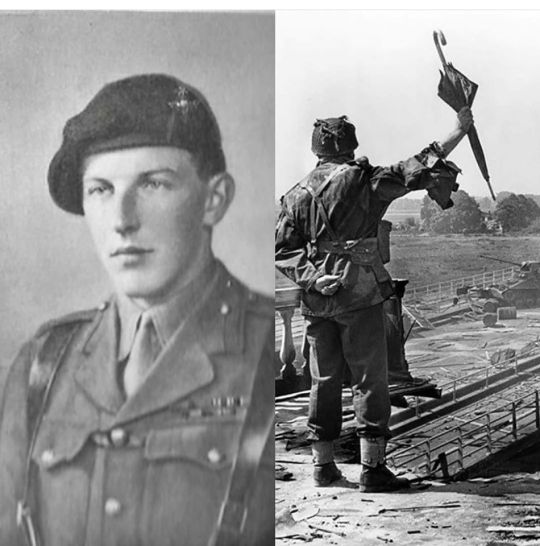
This is Major Digby Tatham-Warter, a British officer who fought in World War 2. He was famous for carrying his umbrella into battle.
The main reason he carried an umbrella everywhere was because he had trouble remembering passwords and declared that anyone who saw him would obviously assume that only a "bloody fool Englishman" would carry an umbrella into combat against the Nazis.
During the battle of Arnhem, Digby led a bayonet charge wearing a bowler hat instead of a helmet against German tanks that were attempting to cross a bridge. His umbrella proved to come in handy as he was able to use it to disable a German armored car, by pushing it through the observational slit and poking the eyes of the driver, completely incapacitating him.
When Digby saw a chaplain pinned down by enemy fire, he reportedly said, "Don't worry about the bullets, I've got an umbrella". He then proceeded to escort him across the street using his umbrella to "shield" him. In another exchange, a fellow officer is said to have told him "that thing won't do you any good", to which Digby replied "Oh my goodness Pat, but what if it rains?
Eventually, Digby was captured by the Germans but quickly managed to escape. He built a compass from the buttons on his uniform to navigate behind enemy lines. Instead of returning back to base, he proceeded to disguise himself as a deaf-mute son of a Dutch lawyer with the help of the Dutch resistance.
To test his disguise he stayed at an inn that also housed German soldiers and he even helped push a Nazi staff car out of a ditch. No one recognized that he was a British soldier in disguise. He went on to round up 150 POWs and used bicycles to ride back to freedom. This was known as Operation Pegasus.
After the war, Digby went on to create the modern safari, where he dictated that animals should be observed and photographed instead of being hunted and killed. He passed away in 1993 of natural causes.
2 notes
·
View notes
Photo
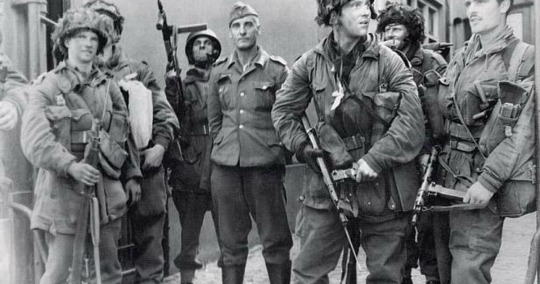
British paratroopers with prisoner on the streets of Arnhem, 1944.
2 notes
·
View notes
Text
Alexey Ignashov - Wikipedia
Belarusian kickboxer
Alexey Victoravich Ignashov[1] (Belarusian: Аляксей Ігнашоў; born January 18, 1978) is a Belarusian Super Heavyweight kickboxer. He is a four-time Muay Thai World champion, K-1 World GP 2003 in Paris and K-1 World GP 2001 in Nagoya tournament champion.[2] He is currently living in Auckland, New Zealand and training at Balmoral Lee Gar Gym under Lollo Heimuli.[3]
Biography
He is best known for his knee strikes, notably used to score knockout wins over Badr Hari, Semmy Schilt, Nicholas Pettas, and Carter Williams. Ignashov is considered by his fans to be one of the most talented and technically sound heavyweight kickboxers in the world. However, he is also considered by many as frustratingly inconsistent, occasionally appearing lackluster or inactive in the ring, such as in his K-1 Final quarterfinal match against Peter Aerts in 2003. He suffered a knee injury in a fight against Bjorn Bregy in 2005. Since then, his performance has diminished.
Ignashov trained in the Chinuk gym for 11 years, before immigrating to New Zealand in 2006.
He has beaten the best kickboxers in the world, including decision wins over three times K-1 champions Remy Bonjasky and Peter Aerts and knockout highlight reel wins over two currently best kickboxers in the world Semmy Schilt and Badr Hari. He has also fought legendary Rob Kaman, losing by decision, but after that fight Rob gave the trophy to Ignashov. Despite all those huge wins, he has lost some bouts where he was a huge favorite. He was TKO'd only two times, each time because of injury, against Bjorn Bregy in 2005 and in his 2009 bout against 2003 French Kickboxing champion Freddy Kemayo.
After 5 years of being out of the major ring events Iggy was granted his wish to return to K-1 in April 2010 against Badr Hari, having one of the best chins in the sport. However he was very inactive in the ring and lost by unanimous decision. He was heavily criticized by the fans after the fight. Ignashov announced that he wants to have a rubber match with Badr Hari after he has a few more K-1 fights to get used to the big ring again. Just recently he competed in his 99 official fight while winning with Freddy Kemayo. He made his comeback after one year at 12 May 2012 in Budapest Hungary losing a decision against Ali Cenik.
He defeated Zinedine Hameur-Lain via decision in Kazan, Russian on 20 October 2012.[4] Just a week later, he was defeated by Tomáš Hron by unanimous decision at Nitrianska Noc Bojovnikov in Nitra, Slovakia.[5]
He was scheduled to fight Benjamin Adegbuyi on 10 November 2012 in Craiova, Romania, in the quarter-finals of the SuperKombat World Grand Prix 2012 Final Elimination.[6][7] Unfortunately, due a broken finger he had to pull out of the event.[8]
On 23 February 2013, he defeated the overmatched Martynas Knyzlis on points in Moscow, Russia.[9]
Ignashov had his rubber match with Badr Hari at Legend 2: Invasion in Moscow on 9 November 2013, losing by unanimous decision in yet another lackluster fight.[10][11][12]
Ignashov is slated to fight Andonis "Wrangler" Tzoros in Greece for the WKN K-1 Super Heavyweight Championship on April 26, 2015.[13]
Professional:
Amateur
1999 I.A.M.T.F. Amateur Muay Thai World Championships

-91 kg
1997 European Amateur Muay Thai Heavyweight Champion

-91 kg
Kickboxing record
Kickboxing Record
86 Wins (41 (T)KOs, 43 Decisions), 22 Losses
Date Result Opponent Event Location Method Round Time 2018-05-30 Loss

Valentin Bordianu Zhara Fight Show Moscow, Russia Decision (Unanimous) 3 3:00 2018-04-06 Win

Dževad Poturak Bellator Kickboxing 9 Hungary Decision (Split) 3 3:00 2015-04-26 Win

Antonis Tzoros The Battle [14] Athens, Greece Decision 3 3:00 Wins the WKN International K-1 Rules Super-heavyweight Championship. 2013-11-09 Loss

Badr Hari Legend 2: Invasion Moscow, Russia Decision (unanimous) 3 3:00 2013-02-22 Win

Martnyas Knyzlis Knockout Show Moscow, Russia Decision 3 3:00 2012-10-27 Loss

Tomáš Hron Nitrianska Noc Bojovnikov Nitra, Slovakia Decision (Unanimous) 3 3:00 2012-10-20 Win

Zinedine Hameur-Lain Tatneft Arena World Cup 2012 Final Kazan, Russia Decision (Unanimous) 3 3:00 2012-07-07 Win

Corneliu Rus SUPERKOMBAT World Grand Prix III 2012, Super Fight Varna, Bulgaria Decision (Unanimous) 3 3:00 2012-05-12 Loss

Ali Cenik Fight Code Dragons Final 32, Prestige Fight Budapest, Hungary Decision (Unanimous) 3 3:00 2011-02-05 Win

Roman Kleibl Fight Code Rhinos Series Nitra, Slovakia Decision 3 3:00 2010-12-11 Loss

Tomáš Hron Yiannis Evgenikos presents: It’s Showtime Athens Athens, Greece Decision (4-1) 3 3:00 2010-05-21 Win

Freddy Kemayo K-1 World Grand Prix 2010 in Bucharest Semi Finals Bucharest, Romania Decision (Unanimous) 3 3:00 Despite victory could not continue in tournament due to injury. 2010-05-21 Win

Mindaugas Sakalauskas K-1 World Grand Prix 2010 in Bucharest Quarter Finals Bucharest, Romania KO 1 1:57 2010-04-03 Loss

Badr Hari K-1 World Grand Prix 2010 in Yokohama Yokohama, Japan Decision (Unanimous) 3 3:00 2009-10-24 Win

Ron Sparks K-1 ColliZion 2009 Final Elimination Arad, Romania KO (Right High Kick) 2 2:15 2009-10-17 Loss

Semmy Schilt Ultimate Glory 11: A Decade of Fights Amsterdam, Netherlands Decision (Unanimous) 3 3:00 2009-06-26 Loss

Freddy Kemayo Gala International Multi-boxes à Coubertin Paris, France TKO (Doctor Stoppage, Shin Injury) 4 2:00 2009-05-16 Loss

Roman Kleibl K-1 ColliZion 2009 Mlada Boleslav Mlada Boleslav, Czech Republic Ext.R Decision (Unanimous) 4 3:00 2009-02-28 Win

Dzevad Poturak K-1 Rules Tournament 2009 in Budapest Budapest, Hungary Ext.R Decision (Unanimous) 4 3:00 2008-10-05 Win

Bjorn Bregy K.O. Events "Tough Is Not Enough" Rotterdam, Netherlands Decision (Unanimous) 3 3:00 2008-03-30 Win

Yang Rae Yoo The Khan 1 Seoul, South Korea Decision (Majority) 3 3:00 2008-02-09 Loss

Gregory Tony KO World Series 2008 Auckland Auckland, New Zealand Decision (Unanimous) 3 3:00 2007-02-24 Win

Attila Karacs K-1 European League 2007 Hungary Budapest, Hungary KO (Left Cross) 1 2:02 2006-08-12 Win

Imani Lee K-1 World Grand Prix 2006 in Las Vegas II Quarter Finals Las Vegas, Nevada, USA Decision (Split) 3 3:00 Despite victory could not continue in tournament due to injury. 2006-05-13 Loss

Gokhan Saki K-1 World Grand Prix 2006 in Amsterdam Semi Finals Amsterdam, Netherlands Decision (Unanimous) 3 3:00 2006-05-13 Win

Petr Vondráček K-1 World Grand Prix 2006 in Amsterdam Quarter Finals Amsterdam, Netherlands KO (Right Cross) 2 2:08 2006-02-25 Win

Gary Goodridge K-1 European League 2006 in Budapest Budapest, Hungary Decision 3 3:00 2005-09-23 Loss

Remy Bonjasky K-1 World Grand Prix 2005 in Osaka – Final Elimination Osaka, Japan Ext.R Decision (Unanimous) 4 3:00 Fails to qualify for K-1 World Grand Prix 2005. 2005-05-27 Loss

Noboru Uchida K-1 World Grand Prix 2005 in Paris Paris, France Decision (Majority) 3 3:00 2005-04-30 Loss

Peter Graham K-1 Battle of Anzacs II Auckland, New Zealand 2nd Ext.R Decision (Unanimous) 5 3:00 2005-02-13 Loss

Bjorn Bregy Mix Fight Gala Alkmaar, Netherlands TKO (Knee Injury) 3 3:00 2004-11-06 Win

Paul Slowinski Titans 1st Kitakyushu, Japan Decision (Unanimous) 3 3:00 2004-09-25 Loss

Kaoklai Kaennorsing K-1 World Grand Prix 2004 Final Elimination Tokyo, Japan Ext.R Decision (Split) 4 3:00 Fails to qualify for K-1 World Grand Prix 2004. 2004-07-16 Win

Josip Bodrozic Kings of Oceania 2004 Auckland, New Zealand KO 1 2004-06-06 Win

Arthur Williams K-1 World Grand Prix 2004 in Nagoya Nagoya, Japan KO (Low Kicks) 1 1:48 2004-05-20 Win

Semmy Schilt It's Showtime 2004 Amsterdam Amsterdam, Netherlands KO (Left Knee Strike) 1 1:20 2004-04-11 Win

Cyrille Diabate MT ONE Saint-Pierre, Réunion Decision 5 3:00 2004-03-27 Win

Carter Williams K-1 World Grand Prix 2004 in Saitama Saitama, Japan KO (Knee Strike) 2 2:42 2004-10-31 Win

Marc de Wit K-1 Marseilles 2004 World Qualification Marseilles, France Decision (Unanimous) 3 3:00 2003-12-06 Loss

Peter Aerts K-1 World Grand Prix 2003 Quarter Finals Tokyo, Japan Ext.R Decision (Unanimous) 4 3:00 2003-10-31 Win

Josip Bodrozic K-1 Final Fight Stars War in Zagreb Zagreb, Croatia Decision (Split) 5 3:00 2003-10-11 Win

Mike Bernardo K-1 World Grand Prix 2003 Final Elimination Osaka, Japan KO (Right Punch & Right Low Kick) 2 2:21 Qualifies for K-1 World Grand Prix 2003. 2003-07-13 Win

Jan Nortje K-1 World Grand Prix 2003 in Fukuoka Fukuoka, Japan KO (Low Kicks) 1 2:49 2003-06-14 Win

Cyril Abidi K-1 World Grand Prix 2003 in Paris Final Paris, France TKO (Corner Stoppage) 3 0:20 Wins K-1 World Grand Prix 2003 in Paris and qualifies for K-1 World Grand Prix 2003 Final Elimination. 2003-06-14 Win

Alexander Ustinov K-1 World Grand Prix 2003 in Paris Semi Finals Paris, France Decision (Split) 3 3:00 2003-06-14 Win

Pavel Majer K-1 World Grand Prix 2003 in Paris Quarter Finals Paris, France KO 3 2003-06-08 Win

Badr Hari It's Showtime 2003 Amsterdam Amsterdam, Netherlands KO (Right Cross) 3 2:55 2002-10-05 Loss

Stefan Leko K-1 World Grand Prix 2002 Final Elimination Saitama, Japan Ext.R Decision (Unanimous) 4 3:00 Fails to qualify for K-1 World Grand Prix 2002. 2002-07-14 Win

Peter Aerts K-1 World Grand Prix 2002 in Fukuoka Fukuoka, Japan Decision (Majority) 5 3:00 2002-05-25 Win

Bjorn Bregy K-1 World Grand Prix 2002 in Paris Paris, France KO (Kick) 5 2:12 2002-02-24 Win

Nobu Hayashi K-1 World Grand Prix 2002 Preliminary Netherlands Arnhem, Netherlands Decision (Unanimous) 5 3:00 2001-10-21 Loss

Francisco Filho K-1 World Grand Prix 2001 Semi Finals Tokyo, Japan Decision (Unanimous) 3 3:00 2001-10-21 Win

Nicholas Pettas K-1 World Grand Prix 2001 Quarter Finals Tokyo, Japan KO (Right Knee) 2 1:21 2001-10-21 Loss

Jerrel Venetiaan It's Showtime - Original Haarlem, Netherlands Decision 5 3:00 2001-07-20 Win

Lloyd van Dams K-1 World Grand Prix 2001 in Nagoya Final Nagoya, Japan Ext.R Decision (Unanimous) 4 3:00 Wins K-1 World Grand Prix 2001 in Nagoya and qualifies for K-1 World Grand Prix 2001. 2001-07-20 Win

Andrew Thomson K-1 World Grand Prix 2001 in Nagoya Semi Finals Nagoya, Japan KO (Left Punch) 1 1:46 2001-07-20 Win

Petar Majstorovic K-1 World Grand Prix 2001 in Nagoya Quarter Finals Nagoya, Japan Decision (Unanimous) 3 3:00 2001-04-21 Win

Paris Vasilikos K-1 Italy Grand Prix 2001 Preliminary Milan, Italy TKO (Jaw Injury) 3 3:00 2001-02-04 Loss

Stefan Leko K-1 Holland GP 2001 in Arnhem Arnhem, Netherlands Disqualification 5 3:00 2000-12-12 Win

Lloyd van Dams It's Showtime - Christmas Edition Haarlem, Netherlands TKO (Exhaustion) 5 3:00 2000-08-20 Loss

Matt Skelton K-1 World Grand Prix 2000 in Yokohama Quarter Finals Yokohama, Japan Decision (Unanimous) 3 3:00 2000-06-24 Win

Sergey Arhipov K-1 Belarus Grand Prix 2000 Final Minsk, Belarus TKO 3 Wins K-1 Belarus Grand Prix 2000 and qualifies for K-1 World Grand Prix 2000 in Yokohama. 2000-06-24 Win

Sergei Matkin K-1 Belarus Grand Prix 2000 Semi Finals Minsk, Belarus KO 2 2:01 2000-06-24 Win

Darius Grilauskas K-1 Belarus Grand Prix 2000 Quarter Finals Minsk, Belarus KO 1 2:32 2000-06-04 Win

Marc de Wit Night of Revenge Haarlem, Netherlands Decision 5 3:00 2000-05-06 Win

Mark Russell Milan, Italy Retains I.S.K.A. World Heavyweight title. 2000-03-13 Win

Jörgen Kruth Night Club "Reaktor" Minsk, Belarus Decision (Unanimous) 5 3:00 Retains W.M.C. Muay Thai Heavyweight World title. 2000-01-23 Win

Harry Hooft Day Of No Mercy Rotterdam, Netherlands Decision 5 3:00 Wins W.P.K.L Muay Thai 86.13 kg European title. 1999-10-24 Loss

Rob Kaman It's Showtime - It's Showtime Haarlem, Netherlands Decision 5 3:00 1999-07-29 Win

Jörgen Kruth Rajamangala Stadium Bangkok, Thailand KO 2 Wins W.M.C. Muay Thai Heavyweight World title. 1999 Win

Daniel Ghiţă I.A.M.T.F World Muay thai Championships, semi final Bangkok, Thailand Decision 4 2:00 1998 Win

Remy Bonjasky W.P.K.L. Muay Thai Fight Night Poland Decision (Unanimous) 5 3:00
Legend: Win Loss Draw/No contest Notes
Mixed martial arts record
Professional record breakdown 3 matches 1 win 1 loss By knockout 1 0 By submission 0 1 By decision 0 0 By disqualification 0 0 Draws 0 No contests 1
See also
References
External links

0 notes
Text
Day Thirty-Five: The Longest Day
It is just after midnight on the 6th of June, 1944. An armada of C-47 transport planes flies over the Channel to Normandy. They carry the 82nd and 101st Airborne Divisions, and are bound for landing sites around Sainte-Mère-Église and Sainte-Marie-du-Mont, behind what will become Utah Beach. Among them is C-47 No. 66, carrying Lieutenant Thomas Meehan and the company command staff of Easy Company.
As the Skytrains (what the Americans call the C-47 – the British designation is Dakota) soar over the western beaches, they are sighted by flak batteries of the Luftwaffe stationed in the area. The sky is suddenly set alight by bursting flak shells – the low cloud cover makes the massed fire look almost like lightening.
Somewhere in that dark sky, C-47 No. 66 is hit more than once. It begins to break formation, turning right – the landing lights turn on. The pilot of the following plane, Lt. Defilta, assumes that it is going to attempt an emergency landing.
Then C-47 No. 66 explodes.
It crashes down to earth like a falling star, smashing into the hedgerows and disintegrating into a ball of fire. The wreckage will burn for three days – when the fire finally subsides, the only recognisable remains are that of the pilot, Lieutenant Harold Cappelluto.
Lieutenant Meehan will never set foot on Normandy. Command of his company will default to the next senior officer, Lieutenant Dick Winters, who will go on to become one of the most respected officers in the company and the division as a whole.
Brigadier-General James Gavin is much more fortunate. Although his men are scattered, he is able to gather forces of the 505th Parachute Infantry Regiment (although the confusion is such that there are likely men of other regiments of the 82nd and elements of the 101st among them). They capture Sainte-Mère-Église and the La Fière Bridge – their scattered drop actually convinces the Germans that there are more paratroopers than there actually are.
At the break of dawn, the landings at Utah commence. Unlike the landings at the other beaches, particularly Omaha, the landing goes off almost without a hitch. Less than two hundred men are killed or wounded. The Germans, with poorly equipped troops manning the beach defences and with paratroopers harassing their rear areas, are unable to provide significant resistance.
James Gavin will later become the commander of the 82nd Airborne. He will not only fight the Germans but the racial segregation that existed in the US Army at the time – the 555th PIR, an African-American Division, will be incorporated into his division shortly after the end of the war. As chief of US Army Research & Development, he will be responsible for the adoption of the M113 Armoured Personnel Carrier, one of the most useful tracked vehicles ever produced. He is still highly regarded today.
As for Thomas Meehan, he is largely forgotten after the war – a footnote in-between the officious, hated Captain Sobel and the highly respected Major Dick Winters. In this, he is probably like most of the men who landed and fell on D-Day – a statistic with no face attached. But he was a human being, and was important to somebody. When he embarked on C-47 No. 66 in the late evening of 5th June 1944, he handed a letter to a ground crewman, asking it be delivered to his wife. It reads as follows;
Dearest Anne:
In a few hours I'm going to take the best company of men in the world into France. We'll give the bastards hell. Strangely, I'm not particularly scared. But in my heart is a terrific longing to hold you in my arms.
I love you Sweetheart - forever.
Your Tom
We departed Rouen early again, heading far west towards Sainte-Mère-Église, which we reached around half-past-ten. Apart from being one of the first towns liberated on D-Day, Sainte-Mère-Église holds a second claim to fame – that of Private Joe Steele, an unfortunate 82nd Airborne paratrooper whose parachute became snagged on the steeple of the local church. He survived by playing dead, and his ordeal is remembered today by the townsfolk hanging an effigy of him from a parachute on the steeple. I suppose that’s one way to get famous.

How’s it hangin’?
My first stop was the Airborne Museum. This museum is dedicated to the US Airborne Divisions and recounts their role in Operation Overlord (or Operation Neptune, as the air and sea part of the landings was known). It is very well presented and well worth a look – of particular note are the C-47 and the Waco glider. After walking around the museum, I walked around the town, which was nice.
After Sainte-Mère-Église, we drove on to Sainte-Marie-du-Mont, which claims to be the first town liberated on D-Day by men of the 101st Airborne, before carrying on down the road to Utah Beach.

Here’s a tank for no especially good reason.
Utah Beach is well presented – there is a lovely museum there, recounting the story of the 4th and 90th Infantry Divisions that landed there, and many of the rusting gun positions and tank traps are still there. It is definitely more memorialised than Sword was, with the beach retained in a sort of ‘as landed on’ condition. There’s also a nice restaurant there in a building that was used by the US Navy as a communications hub.
From Utah, we carried on to Dead Man’s Corner. This rather grisly name comes from a rather grisly story – on the 7th of June, an M3 Stuart rolling up from the beaches was knocked out and gutted by fire, and none of the crew survived. As a result, the crossroads where the wreck lay was christened ‘Dead Man’s Corner’ by the American troops. Today, Dead Man’s Corner has a museum (which I decided to miss, in order to preserve some time) and a militaria emporium. My self-control abandoned me, so long story short, I now own a replica Webley.
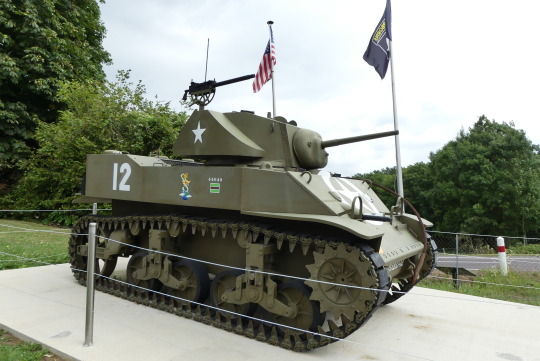
They’ve commemorated the story of Dead Man’s Corner by sticking an M3 Stuart on it. I don’t know how I feel about that.
The last stop for today was Pointe-du-Hoc. On D-Day, after a heavy naval bombardment, two hundred and twenty-five men of the 2nd Ranger Battalion (and one British commando) were landed here by the Royal Navy to knock out a battery of 155mm guns that the Germans had positioned on the top of the cliff – it was believed these guns might target Utah, Omaha and Gold Beaches. The Rangers were landed and climbed the cliffs under heavy fire, only to discover that the guns had been moved – undeterred, they carried on inland, found the guns and destroyed them. They then had to defend their positions from counterattacks for two days, and by the time they were relieved by the 29th Infantry Division and the 5th Rangers, only ninety men were still standing. (If any of this sounds familiar, it’s likely because the Battle of Pointe-du-Hoc was portrayed in Call of Duty 2).
Today, Pointe-du-Hoc is littered with shell holes and smashed concrete bunkers – it is the most visibly disturbed of all the landing sites. A memorial stands over the cliffs, which stretch for several miles in both directions – from the memorial, you can just about see Utah and Omaha Beaches. The whole place is excellently maintained and somehow alien – like a grassy moonscape broken by strange concrete monoliths.

These are not hills - these are the shell holes left by sixteen-inch guns.
Pointe-du-Hoc marks the end a ‘bucket-list’ quest of mine. I have now been – roughly speaking – to all of the landing zones in Normandy. Which I guess means it’s time to start planning Arnhem.
After that, we headed on back to Rouen, where I write this now. Tomorrow we spend the morning in town before embarking on the long journey back over the Channel. It’s been good, but our sojourns on the continent are over – but there still remains a few things to do in Britain…
1 note
·
View note
Text
Historical World War 2 Games
Started out as a content warning list but needed to become its own list because of the sheer size of it.
This is still a WIP and all suggestions and corrections are encouraged.
101: The Airborne Invasion of Normandy
1939
1941: Counter Attack
1941: Frozen Front
1942: Joint Strike
1942: Pacific Airwar Franchise
1943: Kai
1943: The Battle of Midway
1944: The Loop Master
1945: Airwar
1945 I & II: The Arcade Games
‘43 - One Year After
50 Mission Crush
Ace of Aces
Aces of the Deep Franchise
Aces of the Pacific Franchise
Aces of War
Aces over Europe
Achtung Panzer: Kharkov 1943
Achtung Spitfire
Achtung Panzer: Operation Star
Across the Rhein
Action in The North Atlantic
Action Stations!
Admiral Graf Spee
Advanced Destroyer Simulator
African Desert Campaign
Afrika Korps
Airborne Assault Franchise
Airborne Hero D–Day Frontline 1944
Air Conflicts: Aces of World War
Air Conflicts: Air Battles of World War
Air Conflicts: Pacific Carriers
Air Conflicts: Secret Wars
Air Duel: 80 Years of Dogfighting
Airfix: Dogfighter
Air Legends
Air Raid: This is Not a Drill
Allied General
Anglo-German War 39-45
Ardennes Offensive
Ardeny
Ardeny 1944
Armageddon Squadron
Arnhem: The 'Market Garden’ Operation
Artillery Brigade
Assault Wings 1944
Atlantic Patrol
Attack on Pearl Harbour
At the Gates of Moscow 1941
Avalanche: The Struggle for Italy
Avalon Hill’s Squad Leader
Axis & Allies Franchise
B-17 Franchise
B-24
Battle Academy Franchise
Battlefield 1942 Franchise
Battlecruiser
Battle for Midway
Battle for Normandy
Battlefront
Battleground 1: Bulge - Ardennes
Battleground: Ardennes
Battle Group
Battlehawks 1942
Battle Islands
Battle of Britain (1982)
Battle of Britain (1985)
Battle of Britain (1999)
Battle of Britain: 303 Squadron
Battle of Britain II: Wings of Victory
Battle of Britain: Memorial Flight
Battle of Europe
Battle of the Bulge
The Battle of the Bulge: Tigers in the Snow
Battleship 88: Iron Hero
Battles in Normandy
Battlestations: Midway
Battlestations: Pacific
Battlestrike: Force of Resistance
Battlestrike: The Road to Berlin
Battlestrike: The Siege
BBC Battlefield Academy
Beyond Normandy: Assignment: Berlin
Beyond Pearl Harbor: Pacific Warriors
The Big Three
Birds of Steel
Bismarck
Bismarck: Death of a Battleship
Blazing Angels
Blazing Angels 2: Secret Missions of WWII
Blitzkrieg Franchise
Bomb Alley
Breakthrough in the Ardennes
Brothers in Arms Franchise
The Bulge: Battle for Antwerp
Call of Duty
Call of Duty 2
Call of Duty 3
Call of Duty: Finest Hour
Call of Duty: Legacy
Call of Duty: Road to Victory
Call of Duty: United Offensive
Call of Duty: World at War
Call to Arms
Campaign
Cannon Strike
Carrier Strike: South Pacific 1942-44
Carrier Aces
Carrier Force
Carriers at War
Chain of Command
Chain Of Command: Eastern Front
Clash of Steel: World War II, Europe 1939-45
Close Assault
Close Combat: A Bridge Too Far
Close Combat: Cross of Iron
Close Combat: Gateway to Caen
Close Combat III: The Russian Front
Close Combat: Invasion: Normandy - Utah Beach to Cherbourg
Close Combat: Last Stand Arnhem
Close Combat: Panthers in the Fog
Close Combat: The Battle of the Bulge
Close Combat: The Longest Day
Close Combat: Wacht am Rhein
Codename: Panzers Franchise
Combat Command
Combat Command 2: Danger Forward
Combat Mission: Beyond Overlord
Combat Mission 3 - Afrika Corps
Combat Elite: WWII Paratroopers
Commandos: Behind Enemy Lines
Commandos: Strike Force
Commandos 2: Men of Courage
Commandos 3: Destination Berlin
Company of Heroes
Company of Heroes: Opposing Fronts
Company of Heroes: Tales of Valor
Company of Heroes 2
Company of Heroes 2: Ardennes Assault
Company of Heroes 2: Theater of War - Case Blue
Company of Heroes 2: Theater of War - Southern Fronts
Company of Heroes 2: Theater of War - Victory at Stalingrad
Computer Air Combat
Computer Ambush
Computer Bismarck
Computer EastFront
Counter Action
Crete 1941: Fallschirmjager
Crusade in Europe
Daisenryaku Franchise
Daitōa Mokushiroku: Goh
Damage Inc.: Pacific Squadron WWII
Dam Buster
The Dam Busters
Das Boot: German U-Boat Simulation
Day of Defeat
D-Day (2004)
D-Day (1984)
D-Day (1992)
D-Day: America Invades
D-Day: Normandy
D-Day: The Beginning of the End
Deadly Dozen
Deadly Dozen: Pacific Theater
Decision in the Desert
Decisive Battles of WWII Franchise
Deep Strike
Desert Commander
Desert Fox
Desert Rats Franchise
Destroyer
Destroyer Command
Dive Bomber
Dnieper River Line
Dogfight 1942
Dogfight: Battle for the Pacific aka Pacific Warriors II: Dogfight
Dogs of War (Unlicensed Axis & Allies adaptation)
D: Ōshū Shinkirō
Down in Flames
Dreadnoughts
Dunes of War
Enemy Front
East Front & East Front 2
Eastern Front
Elite Forces: WWII - Iwo Jima
Elite Forces: WWII - Normandy
Empire
Eric Young's Squad Assault: West Front
Escape from Colditz & the remake Coldiz Escape! (Not affiliated with the 1970s Coldiz TV show)
Europe Ablaze
European Air War
Europe in Flames
Faces of War
Fall Weiss
Fall Weiß 1939
Fathom's 40
The Few
Field of Fire
Fighter Ace 3.5
Fighter Command: The Battle of Britain
Fighter Duel
Fighter Squadron: The Screamin' Demons over Europe
Fighting Steel
Fire Brigade
Fire Mustang
First Battalion
First Over Germany
Fortress Europe: The Liberation of France
Frontline Franchise
Gary Grigsby's Pacific War (1992)
Gary Grigsby's Pacific War (2000)
Gary Grigsby's War in Russia
Gary Grigsby's War in the East: Don to the Danube
Gary Grigsby's War in the East: Lost Battles
Gary Grigsby's War in the East: The German-Soviet War 1941-1945
Gary Grigsby's World At War
GATO
Germany At War: Barbarossa 1941
Gewetensvragen
G.I. Combat: Episode 1 - Battle of Normandy
Goh II
Great Battles of WWII: Stalingrad
Great Naval Battles: North Atlantic 1939-1943
Great Naval Battles: North Atlantic 1939-43 - America in the Atlantic
Great Naval Battles: North Atlantic 1939-43 - Super Ships of the Atlantic
Great Naval Battles Vol. II: Guadalcanal
Great Naval Battles Vol. III: Fury in the Pacific, 1941-44
Great Naval Battles Vol. IV: Burning Steel, 1939-1942
Guadalcanal
Guadalcanal Campaign
Guderian
Hearts of Iron Franchise
Hidden & Dangerous Deluxe
Hidden & Dangerous 2
Hellcat Ace
Hellcats Over the Pacific
The Heroes of the 357th
Heroes of the Pacific
Heroes of WWII
Heroes Over Europe
Hidden and Dangerous Franchise
High Command: Europe 1939-'45
The History Channel: Battle for the Pacific
The History Channel: Battle for the Pacific
History Legends of War: Patton
HMS Cobra: Convois pour Mourmansk
Hunter Killer
iBomber
iBomber Defense
iBomber Defense Pacific
Il-2 Sturmovik Franchise
iPanzer '44
Iron Aces
Iron Aces: Heroes of WW2
Iron Cross
Iron Front: Liberation 1944
Iron Storm
Iron Tank: The Invasion of Normandy
Iwo jima
Jagdstaffel
Jagdverband 44: Screaming Eagles
Jane's Combat Simulations: Attack Squadron
Jane's Combat Simulations: WWII Fighters
Kampania wrześniowa
Kampfgruppe
Kikō Shidan
Kishi Densetsu
Knights of the Desert
Lancaster
Lead Soldier
Legends of War: Patton's Campaign
Liberty Wings
London Blitz
Luftwaffe Commander: WWII Combat Flight Simulator
Making History: The Calm & The Storm
Making History II: The War of the World
Malta Storm
Medal of Honor
Medal of Honor: Allied Assault
Medal Of Honor: Airborne
Medal of Honor: European Assault
Medal of Honor: Frontline
Medal of Honor: Heroes
Medal of Honor: Heroes 2
Medal of Honor: Infiltrator
Medal of Honor: Pacific Assault
Medal of Honor: Rising Sun
Medal of Honor: Underground
Medal of Honor: Vanguard
Men of War
Men of War: Assault Squad
Men of War: Condemned Heroes
Men of War: Red Tide
Microsoft Combat Flight Simulator 2: WW II Pacific Theater
Microsoft Combat Flight Simulator 3: Battle for Europe
Microsoft Combat Flight Simulator: WWII Europe Series
Midway Campaign
Midway: The Battle that Doomed Japan
Military History: Commander - Europe at War
Mortal Skies: Modern War Air Combat Shooter
Moscow to Berlin: Red Siege
Mud and Blood 2
Muzzle Velocity
Nations
Naval Assault: The Killing Tide
Night Gunner
Norm Koger's The Operational Art of War Vol 1: 1939-1955
North Atlantic Convoy Raider
No Surrender: Battle of the Bulge
Objective: Kursk
Offensive
Officers
Operation Apocalypse
Operation Europe: Path to Victory 1939-45
Operation Crusader
Operation Iceberg: The Battle for Okinawa
Operation Market Garden
Operation Thunderstorm
Operation Whirlwind
Order of Battle: Pacific
Order of Battle: World War II
Order of War
The Outfit
Out of the Sun
Overlord (1994)
Overlord: The Invasion 6th June 1944
Over the Reich
P-38 Lightning
P47 Thunderbolt
Pacific Fighters
Pacific Gunner
Pacific Storm
Pacific Storm: Allies
Pacific Strike
Pacific War
Panthers in the Shadows
Panzer Attack
Panzer Battles
Panzer Campaigns: Bulge '44
Panzer Campaigns VI: Korsun '44
Panzer Campaign VII: Kursk '43
Panzer Commander
Panzer Command: Ostfront
Panzer Corps Franchise
Panzer Elite
Panzer Front
Panzer Front Ausf. B
Panzerfront: Barbarossa 1941-1945
Panzer General Franchise
Panzer Grenadier
Panzer-Jagd
Panzer Killer!
Panzerkrieg: Burning Horizon 2
Panzers East!
Panzer Strike
Panzer Tactics DS
Panzer Tactics HD
Pathway to Glory
Pathway to Glory: Ikusa Islands
Patton Strikes Back: The Battle of the Bulge
Patton vs. Rommel
Pearl Harbour
Pearl Harbor: Defend the Fleet
Pearl Harbor Encounter
Pearl Harbor: Strike at Dawn
Pearl Harbor Trilogy: 1941: Red Sun Rising
Pearl Harbor: Zero Hour
Pegasus Bridge
The Perfect General Scenario Disk: World War II Battle Set
Piotrków 1939
Plane Arcade
Power at Sea
Protivostoyanie: Opaleonniy sneg
PT-109
P.T.O.: Pacific Theater of Operations
P.T.O.: Pacific Theater of Operations II
P.T.O.: Pacific Theater of Operations IV
The Pure Wargame
Pursuit of the Graf Spee
Red Orchestra Franchise
Reach for the Skies
Red Skies
Red Skies: Von Stalingrad nach Berlin
Red Thunder
Rising Storm
Rising Sun
Rising Sun: Imperial Strike
Road to Moscow
Rommel: Battles for North Africa
Rommel: Battles for Tobruk
Rowan's Battle of Britain
RUSE: The Art of Deception
Rush for Berlin
Rush for the Bomb
Russian Front II: The Kursk Campaign
Russia: The Great War in the East 1941-1945
S2: Silent Storm
S3: Silent Storm - Sentinels
Sands of Fire
Search and Destroy
SeaWolves: Submarines on Hunt
SeaWolves II
Second Front: Germany Turns East
Secret Weapons of the Luftwaffe
Secret Weapons Over Normandy
Sega Ages 2500: Vol.22 - Advanced Daisenryaku: Doitsu Dengeki Sakusen
Sherman M4
Sid Meier's Ace Patrol: Pacific Skies
Silent Heroes: Elite Troops of WWII
Silent Hunter Franchise
Silent Service
Silent Service II
Sniper Art of Victory
Sniper Elite Franchise
Soldiers at War
Soldiers: Heroes of World War II
Special Operations
Spitfire
Spitfire '40
Spitfire Ace
Spitfire Attack
Spitfire: The Battle of Britain
Spring 1944
Squad Assault: Second Wave
Steel Fury: Kharkov 1942
Steel Panthers Franchise
Storm Across Europe
Strategic Command 2: Blitzkrieg
Strategic Command 2: Patton Drives
Strategic Command 2: Weapons and Warfare Expansion
Strategic Command: European Theater
Strategic Command: WW II Global Conflict
Strategic Command: WWII Pacific Theater
Strategic Simulations: Commander's Collection
Strategic War in Europe
Strikers 1945
Sub Battle Simulator
Sudden Strike Franchise
TAC: Tactical Armor Command
Talonsoft's 12 O'Clock High: Bombing the Reich
Talonsoft's West Front
Tanke Da Juezhan
Tank Operations: European Campaign
Tanktics
Tank Warfare: Tunisia 1943
Task Force 1942
Team Assault: Baptism of Fire
Theatre of War
Theatre of War 2: Africa 1943
Theatre of War 2: Centauro
Theatre of War 2: Kursk 1943
Theatre of War Collection
Their Finest Hour: Battle of Britain
Time of Fury
Third Reich (1992)
Third Reich (1996)
Tiger Hunt
Tigers on the Prowl
Time of Fury
Tobruk: The Clash of Armour
Torpedo Fire
Total Victory: Victory or Defeat
Trench Warfare - Mod for Wolfenstein 3D
Typhoon of Steel
Unity of Command
UMS II: Nations at War
Uncommon Valor: Campaign for the South Pacific
Under Fire
Under Southern Skies
Unity of Command: Stalingrad Campaign
Up Periscope (1983)
Up Periscope! (1986)
U.S.A.A.F. - United States Army Air Force
V for Victory: Utah Beach
V for Victory: Gold-Juno-Sword
V for Victory: Market Garden
V for Victory: Velikiye Luki
Vulcan: The Tunisian Campaign
War Birds Franchise
WarCommander
War Diary: Burma
Wargame Construction Set II: Tanks!
War in Russia
War in the Pacific: The Struggle Against Japan 1941-1945
War in the South Pacific
Warship
War Times
War Thunder
WarZone 3: WWII Edition
Western Front: The Liberation of Europe 1944-1945
White Death
Winds of Steel
Wings of Destiny
Wings of Fury
Wings of Prey
WolfPack
World at War: Volume II - Stalingrad
World War II Combat: Iwo Jima
World War II Combat: Road to Berlin
World War II: Frontline Command
World War II General Commander: Operation: Watch on the Rhine
World War II: Pacific Heroes
World War II: Panzer Claws
World War II: Panzer Claws 2
World War II: Sniper - Call to Victory
World War II Trivia
World Wars: European Conflicts
World Wars II: Pacific Conflicts
Wulfpack
WW2 Air Force Commander
WW2: Time of Wrath
WWII: Battle Over the Pacific
WWII Battle Tanks: T-34 vs. Tiger
WWII: Desert Rats
WWII GI
WWII Online: Blitzkrieg
WWII Tank Commander
1 note
·
View note
Text
youtube
#the netherlands#netherlands#nederland#holland#arnhem#operation market garden#a bridge too far#veterans#commemoration#battle#world war 2
0 notes
Photo
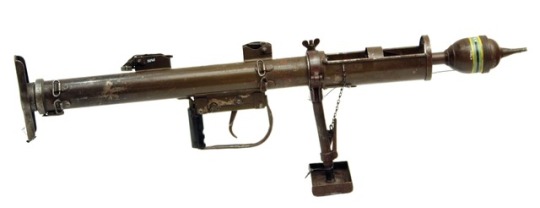
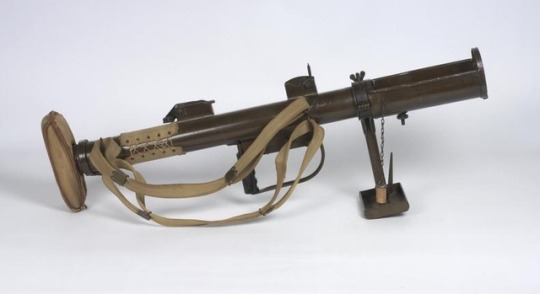
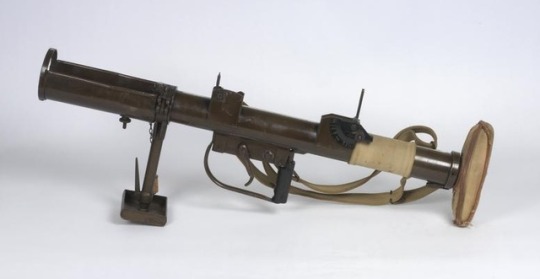


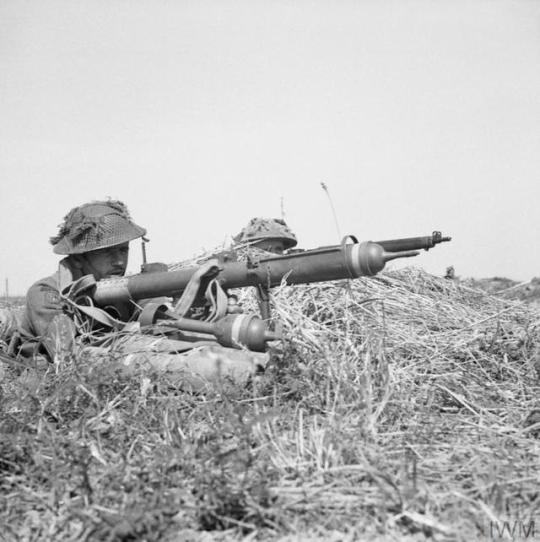
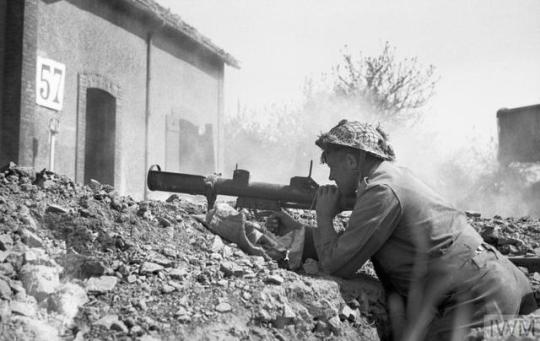
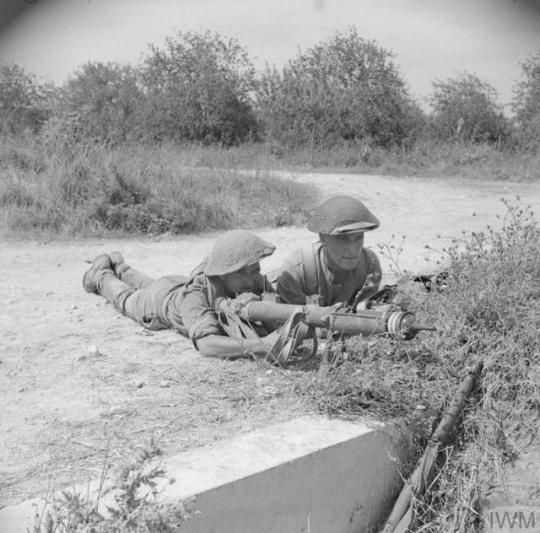

The Projector, Infantry, Anti Tank (PIAT)
In 1941, Britain began developing the Projector, Infantry, Anti Tank, better known as the PIAT. The PIAT would become Britain’s primary anti-tank weapon during World War Two. A year earlier in 1940, the British developed the No. 68 AT Rifle Grenade, however, the No.68 proved unsuccessful and was not widely used. The .55 calibre Boys AT rifle had been in service since 1937, but was quickly found to be ineffective against thicker German armour. The PIAT was a response to the infantry soldier’s need for a lightweight, ranged anti-tank weapon.
Lt-Col. Stewart Blacker took his the 29mm Spigot Mortar, known as the Blacker Bombard, as a basis for a smaller, more portable spigot-based weapon. Blacker developed what he called the ‘Baby Bombard’ - a man-portable, shoulder fired weapon using a hollow charge bomb with a propellant charge in the tail. The Baby Bombard had a large spring and spigot at the base - when the weapon fired the spring was released and the spigot projected up the tail tube of the bomb projecting igniting the propellant charge inside. The ignited propellant charge then forced the bomb off the spigot with propellant gases expanding between the bomb and the spigot throwing it down range. The Baby Bombard was shown to the War Office in June 1941, but initial testing was disappointing. While Blacker moved on to other duties, continuing development was overseen by Major Millis Jefferis, an explosives expert and skilled engineer, at the Ministry of Defence’s research and development establishment MD1. Jefferis redesigned the Baby Bombard, rechristening it the 'Jefferis Shoulder Gun’. It was adopted in the summer of 1942, following successful testing by the Ordnance Board.

Diagram showing the parts of the PIAT from a 1943 training manual (source)
PIAT production began in August 1942, and it first saw action in the summer of 1943, during the Allied invasion of Sicily and remained in service into the 1950s. Imperial Chemical Industries Ltd. and other manufacturers produced approximately 115,000 by the end of the war.
The weapon itself was 39 inches (1m) long and weighed 32 lbs (15kg). The PIAT was not a rocket launcher, instead it relied on a spring-loaded spigot to detonate a propellant charge and launch a bomb containing a shaped charge.Unlike a rocket launcher the PIAT did not have to withstand high pressures and could be made from sheet steel. the positives of the system included its lack of muzzle flash and relatively little report unlike American Bazookas and German Panzerfausts. It was also relatively cheap to manufacture. However, its main drawbacks were its heavy recoil, problems cocking the weapon and the fragile sheet steel it was made from.
The performance of the PIAT in terms of range and armour penetration was adequate. The 3lb (1.35kg) projectile when fired within 100m could penetrate in excess of 100mm of armour. Optimally the projectile could achieve a muzzle velocity of approximately 450ft/s (137m/s). Although as armour skirts came into use the PIAT became less effective. Its maximum effective range against armour was 115 yards (110m), the PIAT could be used against fixed positions and buildings at up to 350 yards (320m) by arcing projectiles onto the target. It was aimed using an aperture sight and could be stabilised with the weapon’s monopod.
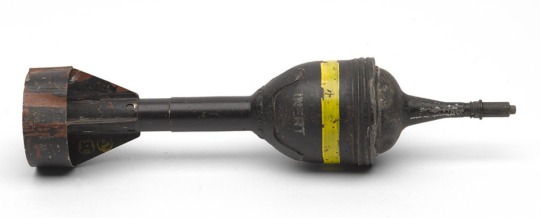
An inert 3lb high explosive PIAT bomb (source)
Each platoon was issued one PIAT, it could be operated by one man but was normally deployed by a two man team, with the second man acting as ammunition carrier and loader. They were extremely useful for airborne units, offering a support weapon able to answer both enemy armour and fixed positions. They were used throughout the war being issued to infantry and also mounted on Universal (Bren Gun) Carriers with mechanised units.
Britain, Canada, Australia and the other Commonwealth nations all used the PIAT. In Australian service it was designated the 'Projector Infantry Tank Attack’ or PITA. The British also dropped PIATs to resistance fighters operating in occupied Europe with many used by the French resistance and some seeing action during the Warsaw Uprising.
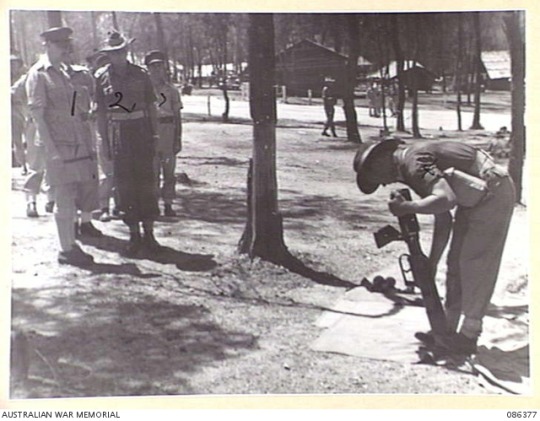
Australian Infantryman demonstrates the loading of a PIAT to Maj. General Milford, c.1945 (source)
Due to their limited range, of about 100 yards, PIATs took a certain amount of courage to use in action. As a result six men were awarded the Victoria Cross for using them to destroy German tanks. During the battle for Arnhem, during Operation Market Garden Major Robert Cain, of 2nd South Staffordshire Regt., won a VC single-handedly immobilising a German Stug Assault Gun and forced three Panzer IVs to retreat using a PIAT. Similarly in Italy in October 1944, Private Ernest Smith used a PIAT to destroy a German Mark V Panther tank winning a VC. 7% of all tanks destroyed by British forces during D-Day operations were knocked out by PIATs, more than destroyed by rocket armed aircraft. Image #7 shows a German Panther tank that was allegedly knocked-out by a PIAT in Bretteville-en-Orguilleuse, near Caen, in summer 1944.
The PIAT needed to be manually cocked before the first shot, theoretically the recoil from firing would then re-cock it for subsequent shots. Cocking was achieved by compressing a large spring within the body of the launcher, this was difficult to achieve without standing up. The PIAT’s manual does depict and explain how this could be accomplished in the prone position.

PIAT team from the 1st Btn. London Irish Rifles, the number two loads a projectile (source)
To ready the PIAT to fire the operator would stand the PIAT on its butt, holding it firmly twist the weapon to disconnect the shoulder pad which was attached to the cocking rod. By standing on the shoulder pad and pulling the body of the weapon up the spigot (which acted as a firing pin) and spring were compressed and the spring into the firing position and attached it to the trigger mechanism cocking the weapon. The body was then slid back down to the shoulder pad and re-latched. A projectile was then placed in the in the trough/tray at the front of the weapon. The 'draw weight’ of the PIAT equalled ~90kg of spring tension. The PIAT was difficult to operate by smaller, shorter soldiers. The recoil caused by the detonation of the propellant then blew the spigot/iring pin backwards onto the spring; this automatically cocked the weapon for subsequent shots, theoretically eliminating the need to manually re-cock
While the PIAT was heavy, cumbersome, difficult to cock and hard on the shoulder when fired. It proved an effective anti-tank weapon, capable of defeating most tanks when used with cunning and daring. They later saw action during the Korean War but were phased out of service by the mid-1950s. But were soon replaced by US M20 'Bazooka’ rocket launchers and the No.94 ENERGA AT-Rifle Grenade. The Haganah, the predecessor of the IDF, also used British PIATs during the 1948 Israeli War of Independence.
Sources:
Images: 1 2 3 4 5 6 7 8 9
Projector, Infantry, Anti-Tank, IWM, (source)
PIAT, ParaData, (source)

If you enjoy the content please consider supporting Historical Firearms through Patreon!
#History#Military History#PIAT#Anti tank weapon#Projector Infantry Anti Tank#Ordnance of the Week#British Army#World War Two#Korean War#Spigot Mortar#Blacker Bombard#Baby Bombard#Stewart Blacker#Millis Jefferis#MD1#WWII#WW2#Weapons#Firearms#AT weapons#PITA#Projector Infantry Tank Attack#Bazooka#gunblr#anti tank weapons#anti tank launcher
288 notes
·
View notes
Text
> Download No Greater Ally: The Untold Story of Poland’s Forces in World War II Full Pages
>Read In Pdf No Greater Ally: The Untold Story of Poland's Forces in World War II Full Online
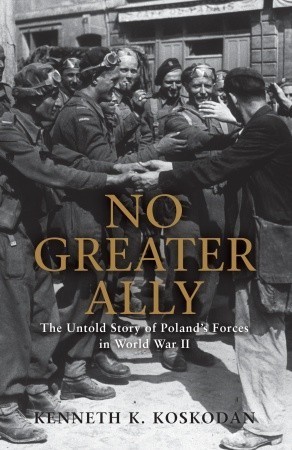
Read/Download Visit :
http://knowledgeworldbook.com/?book=1849084793
Book Details :
Author : Kenneth K. Koskodan
Pages : 304 pages
Publisher : Osprey Publishing
Language : en-US
ISBN-10 : 1849084793
ISBN-13 : 9781849084796
Book Synopsis :
Read Online and Download No Greater Ally: The Untold Story of Poland's Forces in World War II .There is a chapter of World War 2 history that remains largely untold: the story of the fourth largest Allied military of the war, and the only nation to have fought in the battles of Leningrad, Arnhem, Tobruk and Normandy. This is the story of the Polish forces during the Second World War, the story of millions of young men and women who gave everything for freedom and in the final victory lost all. In a cruel twist of history, the monumental struggles of an entire nation have been largely forgotten, and even intentionally obscured.Available for the first time in paperback, No Greater Ally redresses the balance, giving a comprehensive overview of Poland's participation in World War 2. Following their valiant but doomed defense of Poland in 1939, members of the Polish armed forces fought with the Allies wherever and however they could. With previously unpublished first-hand accounts, information never before seen in English, and rare photographs, this title provides a detailed .
Kenneth K. Koskodan book No Greater Ally: The Untold Story of Poland's Forces in World War II.
0 notes
Photo

The Battle of Hürtgen Forest (German: Schlacht im Hürtgenwald) was a series of fierce battles fought from 19 September to 16 December 1944, between American and German forces on the Western Front during World War II, in the Hürtgen Forest, a 140 km2 (54 sq mi) area about 5 km (3.1 mi) east of the Belgian–German border.[1] It was the longest battle on German ground during World War II and is the longest single battle the U.S. Army has ever fought.[7]
The U.S. commanders' initial goal was to pin down German forces in the area to keep them from reinforcing the front lines farther north in the Battle of Aachen, where the US forces were fighting against the Siegfried Line network of fortified industrial towns and villages speckled with pillboxes, tank traps, and minefields. A secondary objective may have been to outflank the front line.[citation needed] The Americans' initial tactical objectives were to take Schmidt and clear Monschau. In a second phase the Allies wanted to advance to the Rur River as part of Operation Queen.
Generalfeldmarschall Walter Model intended to bring the Allied thrust to a standstill. While he interfered less in the day-to-day movements of units than at the Battle of Arnhem, he still kept himself fully informed on the situation, slowing the Allies' progress, inflicting heavy casualties, and taking full advantage of the fortifications the Germans called the Westwall, better known to the Allies as the Siegfried Line. The Hürtgen Forest cost the U.S. First Army at least 33,000 killed and wounded, including both combat and non-combat losses, with upper estimate at 55,000; German casualties were 28,000. The city of Aachen in the north eventually fell on 22 October at high cost to the U.S. Ninth Army, but they failed to cross the Rur or wrest control of its dams from the Germans. The battle was so costly that it has been described as an Allied "defeat of the first magnitude," with specific credit given to Model.[8][9]: 391
The Germans fiercely defended the area because it served as a staging area for the 1944 winter offensive Wacht am Rhein (known in English-speaking countries as the Battle of the Bulge), and because the mountains commanded access to the Rur Dam[notes 3] at the head of the Rur Reservoir (Rurstausee). The Allies failed to capture the area after several heavy setbacks, and the Germans successfully held the region until they launched their last-ditch offensive into the Ardennes.[2][10] This was launched on 16 December and ended the Hürtgen offensive.[1] The Battle of the Bulge gained widespread press and public attention, leaving the battle of Hürtgen Forest less well remembered.
The overall cost of the Siegfried Line Campaign in American personnel was close to 140,000.
https://en.wikipedia.org/wiki/Battle_of_H%C3%BCrtgen_Forest
0 notes